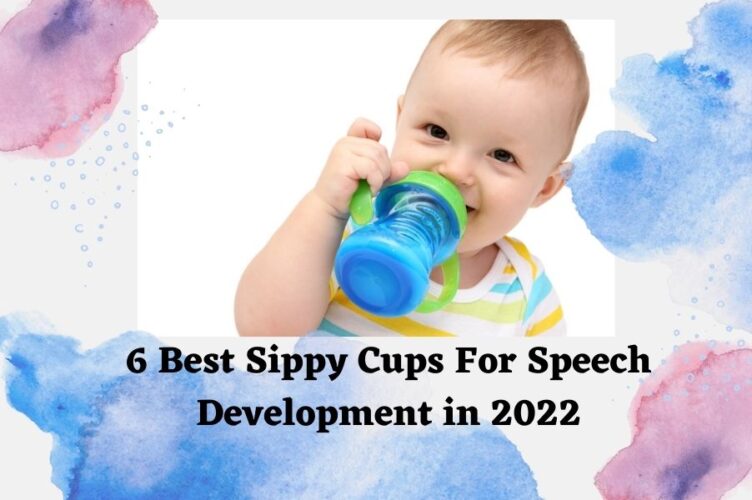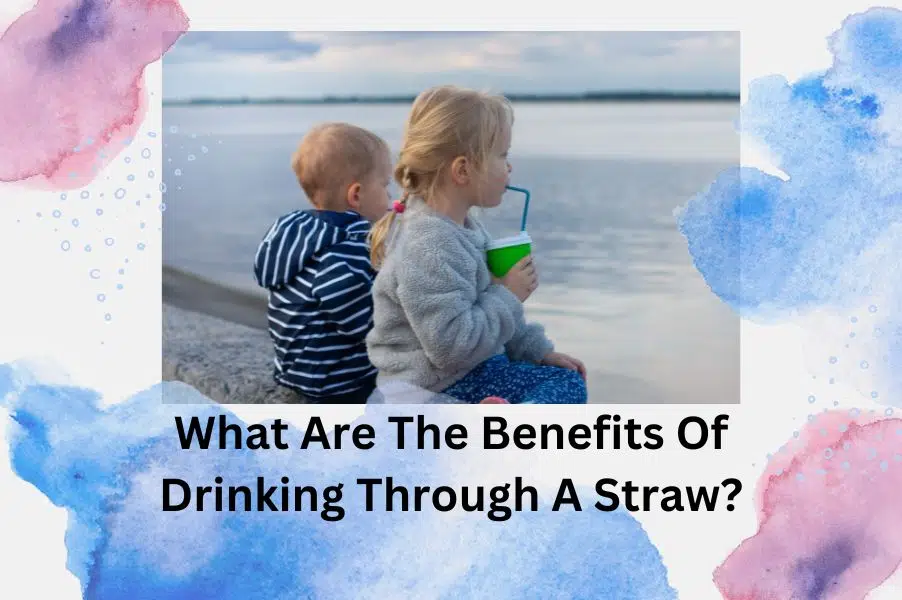Are you already stressing about how to keep your toddler’s teeth clean and healthy? Here’s an answer that will make everyone happy – whiten them simultaneously! Many sippy cups on the market promise to help with teeth whitening, but which one is best for your child? I’ll help you figure it out.
Parents need to consider what type of sippy cup their toddler will use. Many different designs and styles are available, so it’s crucial to find one your child likes and will use. If they don’t enjoy the cup, they’re not likely to drink from it, which can defeat the purpose of using a sippy cup.
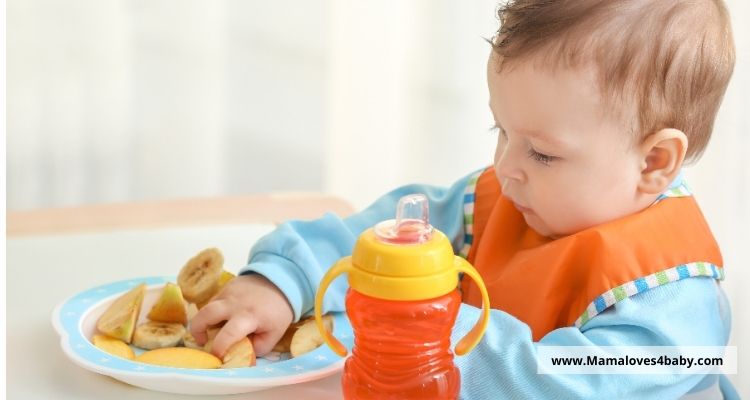
According to the American Dental Association, babies must switch from bottles or breast milk when they reach 12 months to 24 months of age.
Let’s discover what the dentist says about what kind of training cup to use for improving your toddler’s oral health? and what kind of sippy cup is best for teeth whitening ?
What is a sippy cup?
A sippy cup is a drinking cup with a sealable lid and a spout that helps toddlers transition from bottles to regular cups. Sippy cups can be made from different materials, such as plastic, silicone, or stainless steel. The basic purpose of sippy cups is to help parents avoid messes due to spills. Some sippy cups are suitable for teeth problems, but do they work? Let’s look at some available options and determine what sippy cup is best for teeth and keeping them pearly whites shining!.
Main types of sippy cups
There are many different types of material sippy cups available on the market. Still, they can broadly be divided into three main categories: hard plastic cups, soft silicone cups, and stainless steel cups. Each type has its benefits and drawbacks when it comes to teeth whitening.
Hard plastic sippy cups
These are the most common cups and are usually made from BPA-free materials. They’re affordable, durable, and dishwasher-safe, but some parents find them challenging to clean. And they can be prone to staining.
NUK Fun Grips Hard Spout Sippy Cup
Solimo Hard Spout Cup
Soft silicone sippy cups
These are made from flexible, food-grade silicone. These training cups provide a smooth and flexible feel to babies. They are often more expensive than hard plastic cups, but they’re easy to clean and don’t retain stains, and some parents find that their children prefer silicone’s soft, squishy feel.
OXO Tot Transitions Soft Spout Sippy Cup with Removable Handles
Stainless steel cups
These are also popular for sippy cups as they’re durable, easy to clean and don’t retain stains or odors. However, they can be more expensive than hard plastic and silicone cups.
The best sippy cup for teeth whitening is ultimately the one that your child will use regularly. Try out a few different types.
Thinkbaby Stainless Steel Sippy Cup
Other types of Sippy cups
Here are the most popular types of sippy cups based on design to help you choose the one that is best for your child’s teeth whitening needs:
Soft sippy cups
These cups are ideal for babies aged 4 to 6 months. They help to develop the habit of drinking water for babies independently. They have soft spouts, and comfortable grip handles, so the baby does not get irritation on gums and drinks quickly. At this age, parents should avoid open straw cups to prevent babies from spillage and any other accidental damage with straws.
Standard cups
These are the most basic training cups and usually feature a hard plastic or metal exterior with soft silicone or rubber interior. They are easy to clean, require no cleaning tools, and are dishwasher safe but can be difficult for kids to drink from and often leak.
Spoutless Sippy Cups
Spoutless cups feature a soft, silicone spout that is easy for kids to drink from and leakproof. They are more expensive than standard sippy cups but are worth the investment if you are looking for a cup your child can easily use. These are ideal for ages between 6 to 12 months.
Straw Sippy Cup
These cups feature a straw that protrudes from the top of the cup, making it bliss for kids to drink. They can be more challenging to clean than other sippy cups, but they are spillproof and easy to use. Moreover, best for crawlers.
Open Cups
These cups are regular cups but have spillproof lids like munchkin miracle 360. you can use this open cup if you want to avoid straws completely.
Insulated Sippy Cups
These cups keep cold or hot and leakproof drinks. They are more expensive than other sippy cups but are worth your money if you look for a cup that works well while traveling.
What kind of sippy cup is best for teeth whitening?
I have used a sippy cup for my children, and it’s the best way to keep their teeth healthy and white. But, Which sippy cup should I choose for my child? All the cups mentioned above have their benefits and drawbacks, depending on your individual needs. A plastic sippy cup is a good option if you’re looking for an affordable cup that won’t stain your toddler’s teeth.
If you’re looking for a cup that’s easy to clean and won’t retain stains, a silicone sippy cup is a good choice. A stainless steel cup is away if you’re looking for a durable, easy-to-clean cup and an on-the-go cup. No matter which type of sippy cup you choose, make sure to brush your toddler’s teeth after every use to keep those pearly whites shining bright!
What sippy cup is best for teeth problems: Precautions to take
- No matter what type of sippy cup you choose, it is essential to make sure that it is made from safe materials that will not leach chemicals into your child’s drink.
- Before purchasing them, read the labels on sippy cups and choose BPA-free and phthalate-free ones.
- It would be best to avoid sippy cups with PVC or polycarbonate plastics.
The most important thing is to choose a cup made from safe materials that your child can easily use. If you take the time to find the right cup, you can help your child develop healthy habits that will last a lifetime.
Are sippy cups bad for teeth?

No, sippy cups are not bad for teeth! They can be good for teeth if they’re used correctly. Just be sure to find a cup made of materials that won’t stain teeth and has a straw or spout specifically designed to help keep teeth clean.
Excess to everything is bad. The same goes for training cups. The prolonged use of sippy cups filled with sugary drinks will cause tooth enamel, build oral cavities and result in tooth decay at the early age of babies. So, AAP recommends using sippy cups for a limited time when you want your baby to transition from bottle to cup.
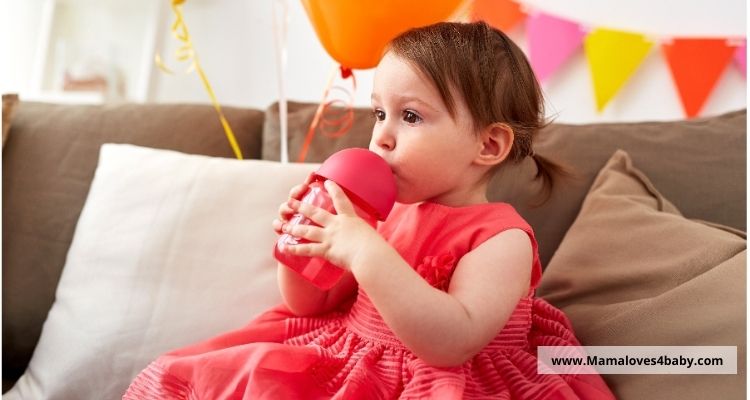
But they also recommend using open cups or cups without spouts to develop the drinking habits rather than continue the infant swallow pattern or sucking on a bottle nipple.
You might also want to consider a cup with a built-in toothbrush to help get those pearly whites shining!
When to start using a spout cup?
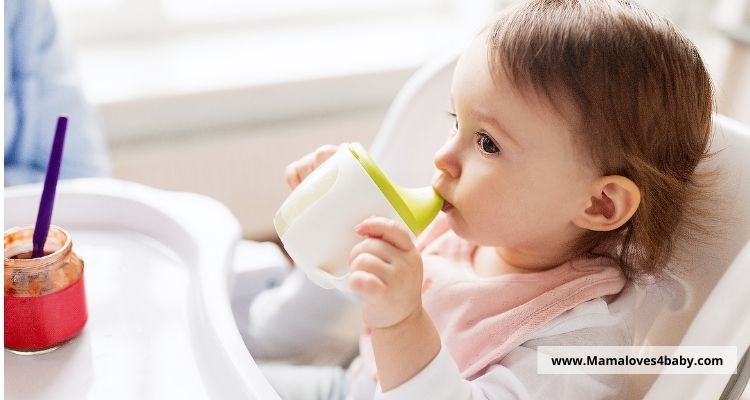
Some parents introduce their child to a transition cup as early as six months old, while others wait until their child is a bit older. There is no right or wrong answer, and it ultimately comes down to what you feel is best for your child. Then, what kind of sippy cup is best for teeth growth? If you decide to give your child a sippy cup with a flexible spout at an early age, choose one made of durable, BPA-free material and has a bite-resistant spout. Moreover, it must be top-rack dishwasher safe.
But, switch the spout or straw cups as your child grows to 12 months of age to develop a mature swallow pattern. It is advisable to offer plain water when using spout cups, so babies’ emerging teeth will not have bad effects from fruity juices.
Related : How often should you replace baby bottles?
What is the best way to use a training cup?
After configuring what kind of sippy cup is best for teeth health, let’s focus on the best way to use it. Sippy cups without a valve beneath the spout can be great for teeth whitening because they help avoid contact between the teeth and sugary drinks like fruit juice. The spout of the sippy cup covers the teeth more than the regular cup, so there is less chance of sugars coming into contact with them. It can help to reduce the chances of tooth decay and staining.
What to look for in the best sippy cups for teeth?
Sippy straw cups are a great way to transition your child from bottles to cups, but choosing the right cup type is important to avoid baby teeth problems. According to the American Association of Pediatrics AAP sippy cup guidelines, you should look at some of these essential features when exploring what kind of sippy cup is best for teeth problems.
- Choose the one with silicone, rubber, or softer spouts like the bottle’s nipple for babies under 12 months. These are less likely to damage the teeth and will be gentler on your child’s gums than hard plastic spouts.
- The second thing is to select a transition cup with no valve because the valve will let your kid suck just like a bottle nipple. It will increase the chances of tooth decay.
- The third crucial factor is a tight-fitting lid. It will help prevent spillages and minimize the number of sugary drinks that contact the teeth.
- It is also essential to choose a cup that is easy to clean, as this will help remove any buildup of plaque and bacteria.
- Parents also need to consider cup gripping. You can choose transition cups with removable handles to be used afterward for two to three years.
- The best sippy cups for teeth whitening are BPA-free plastic and broad bases. It will help prevent tipping and spillages, and the wider base will make it easier for your toddler to hold the cup without dropping it.
- Choose a cup with a straw attachment for easy drinking, and make sure that the straw is positioned at the back of the cup so that it does not come into contact with the teeth.
Check out some Best baby bottles for acid reflux
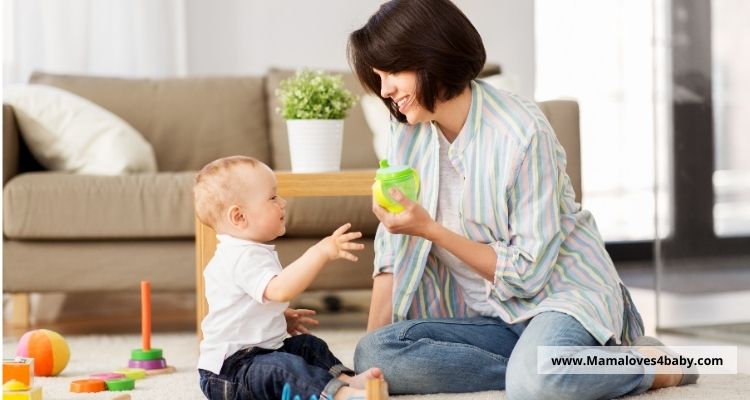
Tips for using sippy cups effectively.
Following these tips, you’ll be sure to choose the best sippy cup for your child’s teeth!
- Choose a sippy cup made from BPA-free plastic and has a wide base to prevent spillages from tipping over.
- Look for a cup without a valve because the valve will limit the flow of liquid and let the baby suck harder.
- Look for a trainer cup with a straw attachment for easy drinking.
- Make sure that the straw is positioned at the back of the trainer cup so that it does not contact the teeth.
- You can also use trainer cups to start solid baby foods like infant cereals, yogurts, and fruit juices.
- Use the sippy cup between mealtimes with plain water to avoid tooth decay.
- Clean as early as possible to avoid the fruity juices from solidifying.
- Clean the straw cups regularly with a straw cleaning brush to prevent bacteria.
- Inspect the sippy cup for any signs of wear and tear, and replace it if necessary.
- Please encourage your kid to brush their teeth after drinking from the training cup.
- Allow your kid to use the sippy cup while sitting because falling with a sippy cup while walking can cause tooth injury.
What are the benefits of using a straw sippy cup?
- Best sippy cups can help prevent tooth decay.
- The right sippy cup can help toddlers develop good oral hygiene habits.
- Sippy cups are convenient and easy to use.
- They are less likely to spill than regular cups due to spill-proof lids.
- Sippy cups are available in a variety of colors and designs.
- They can help toddlers transition from baby bottles to regular cups.
- Sippy cups are usually made of durable materials.
- Sippy cups can be used with or without a straw.
- They also have interchangeable lids and can be effortlessly fit in a diaper bag.
- Sippy cups are top-rack dishwasher safe.
- Sippy cups are BPA-free.
How to transition your child from a bottle to a sippy cup?
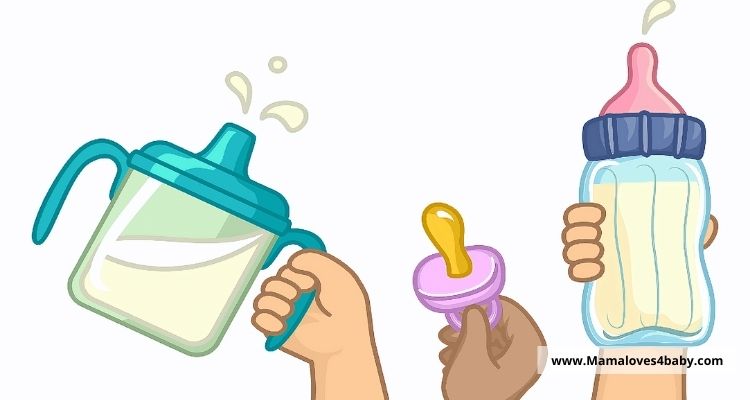
You can do a few things if you’re wondering how to transition your child from a bottle to a sippy cup. First, start by offering your child their bottle at mealtimes and then slowly introduce the training cup during other times of the day. You can also try giving them both options and letting them choose which one they want to use.
Eventually, they will likely gravitate towards the training cup, and you can phase out the baby bottles altogether. Parents need to be careful at this early age and avoid straw sippy cups and exclusively open cups. But when your baby grows, you can offer fruit juice to them.
According to the American Dental Association, sugary fruit juice can increase the risk of cavity buildup. Therefore clean water with fluoride is best for your baby’s oral health. When your child reaches between 6 to 12 months of age, parents can also offer infant food to your child to avoid bottle feeding or breast milk.
Signs that your child is ready to transition to a sippy cup
A few key signs indicate that your child is prepared to transition from a bottle to a sippy cup.
- First, they should be able to hold their head up and sit upright without support.
- They should also be able to coordinate their hands and mouth to drink from a cup.
- If they are still using a bottle, you may notice that they are spilling more often or trying to drink from it while holding it upside down.
These are all reasonable indications that it’s time to make the switch!
Conclusion
Encouraging your little one to switch from bottles to regular cups for drinking milk can be hard, but parents have to take care of babies’ emerging teeth. Excessive use of bottle feeding can be a factor in tooth decay that can be controlled with the sippy cups. But before moving to the transition cups, parents should consider the appropriate type of sippy cup according to the age of babies.
I recommend Munchkin Miracle Stainless Steel 360 Sippy Cup for kids. It prevents spillage and gives your child a smooth learning experience.

